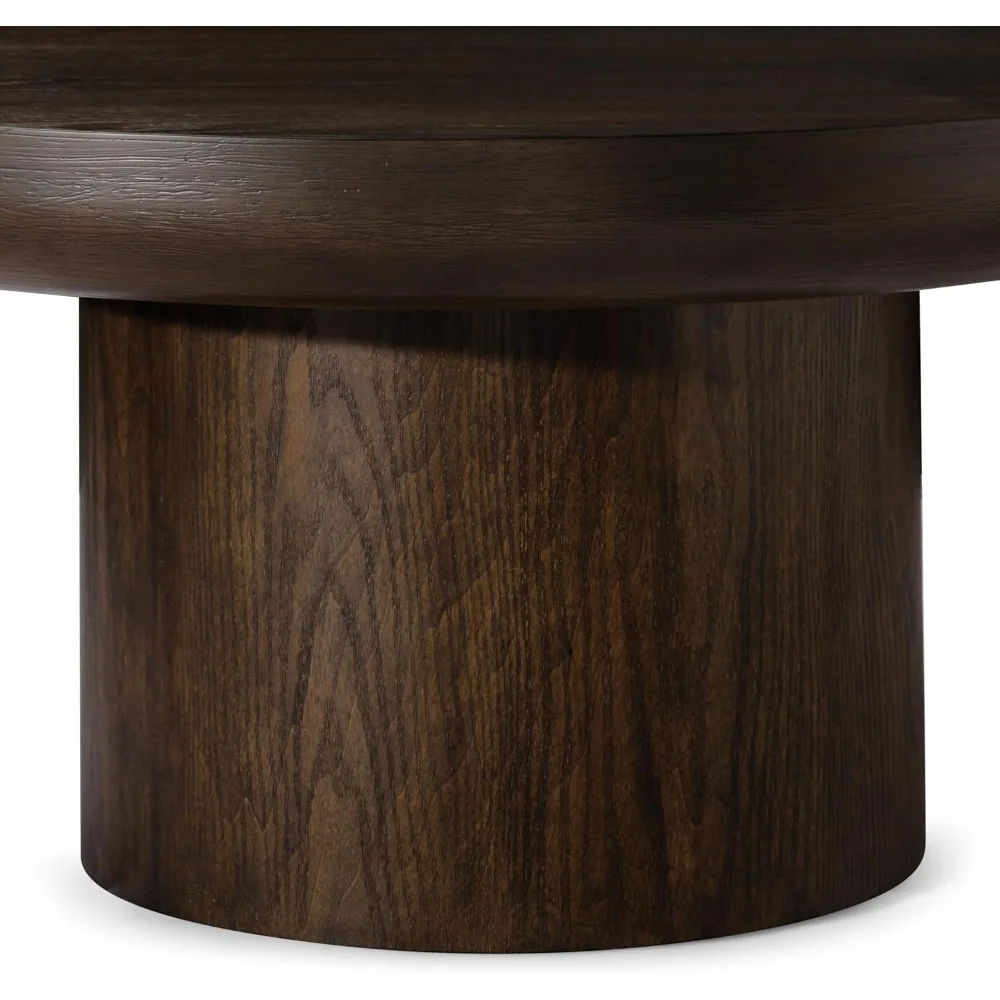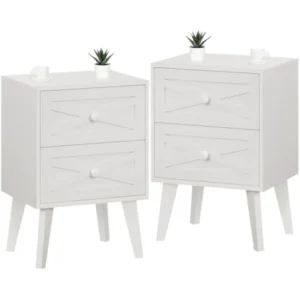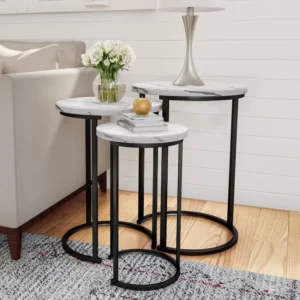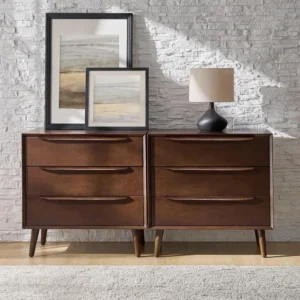Understanding the Scandinavian Approach to Small Space Living
Living in compact spaces has become increasingly common as urban housing grows more expensive and apartment sizes shrink. Recent trends show that the average size of newly built apartments has decreased by almost 10% in major cities over the last decade, creating a growing need for smart solutions to maximize limited square footage.
This challenge is where Scandinavian design truly shines. Born from the practical needs of Northern European homes with limited space and long, dark winters, Scandinavian furniture philosophy emphasizes functionality without sacrificing beauty. The approach developed not merely as an aesthetic choice but as a practical response to real living constraints.
What makes Scandinavian design particularly suitable for small homes is its core focus on three elements: functionality that serves real needs, visual lightness that creates a sense of space, and thoughtful minimalism that prevents clutter. These principles emerged from necessity but have evolved into a timeless approach that addresses many modern living challenges.
The elements found in intelligent black mid-century coffee tables share many characteristics with traditional Scandinavian design, both emphasizing clean lines and purposeful construction. This design philosophy isn’t just about creating attractive spaces—it’s about improving daily life through thoughtful design that maximizes limited resources.
Adopting these principles offers both practical and emotional benefits. Physically, rooms feel more spacious and easier to navigate. Emotionally, the reduction of visual noise creates a sense of calm that counteracts the stress often associated with cramped living. Understanding the fundamental key features of Scandinavian furniture helps homeowners make intentional choices that transform challenging spaces into comfortable, functional homes.
Key Principles of Scandinavian Design for Small Spaces
Functionality First
At the heart of Scandinavian design is a deep commitment to functionality. Every item must earn its place through purpose rather than mere decoration. This doesn’t mean furniture can’t be beautiful—rather, its beauty emerges from its usefulness. Consider how a simple side table might incorporate a small drawer or shelf beneath, or how a headboard integrates storage. This practicality ensures that small spaces work harder without feeling cramped.
Minimalism with Warmth
Scandinavian minimalism differs from other minimalist styles through its emphasis on comfort—what Danes call “hygge” (pronounced hoo-ga). This concept balances clean simplicity with inviting warmth. In practice, this means streamlined furniture with soft textiles, creating spaces that feel both orderly and welcoming. The goal is never starkness but rather thoughtful curation where each piece matters.
Light and Brightness
Living with limited daylight hours, Scandinavians understand the psychological importance of maximizing light. This translates to furniture choices that allow light to flow through spaces—raised legs rather than boxy bases, lighter color palettes, and reflective surfaces. These choices make small rooms feel airier and more expansive while improving mood and energy levels.
Natural Materials
The Scandinavian preference for natural materials like pale woods, wool, cotton, and linen serves both aesthetic and practical purposes in small spaces. These materials age beautifully, create visual consistency, and connect interiors with nature. Light-toned woods like ash, birch, and pine reflect more light than darker alternatives while adding warmth without visual heaviness.
Clean Lines and Simple Forms
Uncomplicated silhouettes are fundamental to creating visual calm in limited square footage. Furniture with straightforward forms without excessive ornamentation allows the eye to rest, making spaces feel less crowded. The similarities and differences between Scandinavian vs midcentury modern design highlight how both styles use clean geometry to create timeless pieces that don’t overwhelm spaces.
These principles work together to create environments that feel spacious beyond their actual dimensions. By choosing furniture that embodies these characteristics, even the smallest apartment can become both highly functional and visually appealing.
Multi-functional Furniture Solutions
When space is at a premium, furniture that performs multiple roles becomes essential rather than merely convenient. Multi-functionality represents perhaps the most practical application of Scandinavian design philosophy in small spaces.
Transformable seating options lead this category, with sleeper sofas and daybeds that convert from comfortable seating by day to beds by night. The best versions don’t compromise on either function—they provide proper back support when used as seating and comfortable sleeping surfaces when extended. Look for mechanisms that operate smoothly with minimal effort.
Tables present another opportunity for space optimization through:
– Extendable dining tables that expand only when needed for guests
– Drop-leaf designs that can sit flush against walls when not in use
– Height-adjustable tables that transition from coffee table to dining height
Storage ottomans and benches offer triple functionality by providing seating, storage, and often serving as coffee tables. These pieces are particularly valuable in studio apartments where every inch must work harder.
Nesting coffee tables represent one of the most elegant Scandinavian solutions for small spaces. These sets of two or three tables of graduated sizes tuck neatly together when not needed but can be spread throughout a room when entertaining. This flexibility makes them far more practical than a single larger coffee table in limited spaces.
Similarly, lift-top coffee tables exemplify intelligent design by incorporating hidden storage and creating an instant work surface without requiring additional furniture. These pieces allow a living room to quickly transform into a home office or dining area without spatial compromise.
When selecting multi-functional pieces, prioritize smooth-operating mechanisms and quality construction. In small spaces, these pieces will see more frequent transformation than in larger homes, making durability particularly important.
Vertical Space Utilization Strategies
While floor space in small homes is limited, vertical space often remains underutilized. Scandinavian design excels at capturing this dimension through thoughtful solutions that draw the eye upward and maximize storage capacity without crowding floor plans.
Wall-mounted shelving systems represent the cornerstone of vertical storage strategy. Unlike floor-standing bookcases that consume precious square footage, wall-mounted options create storage with zero footprint. A typical wall-mounted bookcase measuring 6 feet (1.8 meters) tall with a 12-inch (30 cm) depth provides 18 cubic feet (0.5 cubic meters) of storage without using any floor space.
These systems come in several configurations:
– Adjustable track systems allowing for reconfiguration as needs change
– Floating shelves for a minimalist, visually lighter appearance
– Modular cubes that can grow with your storage needs
– Ladder-style leaning bookcases that require minimal wall attachment
When floor-standing storage is necessary, tall narrow units maximize storage-to-footprint ratio. Look for cabinets and bookcases that extend to near-ceiling height, especially in rooms with standard 8-foot (2.4-meter) ceilings or higher. The uppermost sections can store seasonal items or less-frequently used possessions.
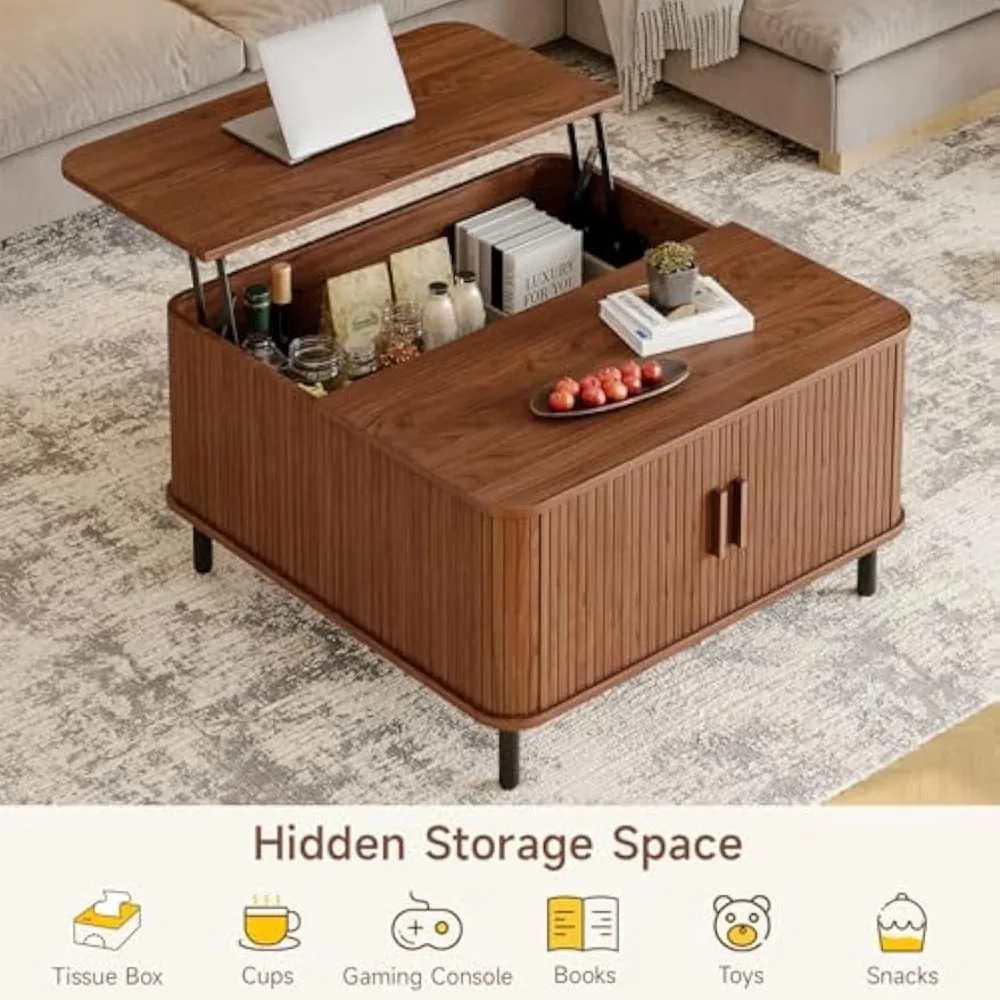
Suspended storage options add another dimension to space utilization. Consider:
– Under-cabinet storage in kitchens and bathrooms
– Ceiling-mounted racks for kitchenware or plants
– Wall-mounted desks that fold up when not in use
The best shape coffee table for a small space often depends on how vertical elements interact with horizontal ones. Round or oval coffee tables allow better circulation in tight spaces while still providing function.
To maximize vertical storage effectiveness:
1. Store frequently used items between waist and eye level
2. Reserve highest storage for seasonal or rarely used items
3. Use the lowest storage areas for heavier items for stability
4. Incorporate doors on lower portions to hide visual clutter
5. Leave some open shelving to display curated items that add personality
By thinking vertically, even the smallest floor plan can accommodate surprising amounts of storage while maintaining an open, uncluttered appearance that aligns with Scandinavian design principles.
Creating Visual Spaciousness Through Design
Beyond actual square footage, how spacious a room feels depends significantly on visual perception. Scandinavian design excels at creating a sense of openness through thoughtful visual techniques that trick the eye into perceiving more space.
Light colors form the foundation of this approach. Walls, major furniture pieces, and flooring in whites, creams, and pale woods reflect light rather than absorbing it, making rooms feel immediately larger and brighter. This doesn’t mean spaces must feel cold—warm whites and light neutrals maintain the expansive feeling while adding warmth.
Furniture construction plays a crucial role in perceived spaciousness. Pieces with visible legs create sight lines underneath, allowing the eye to travel further and perceiving more floor area. This simple design element can dramatically change how confined a room feels. Glass-top coffee tables further enhance this effect by maintaining visual continuity throughout the space.
Strategic use of transparent and reflective materials amplifies available light and creates visual depth. Consider:
– Glass or acrylic side tables that “disappear” visually
– Mirrors positioned to reflect windows or light sources
– Glossy cabinet fronts that bounce light around the room
Maintaining open sightlines throughout the space prevents visual blockages that make rooms feel smaller. Position taller furniture against walls rather than floating in rooms, and consider the paths your eyes naturally take when entering a space. Even styling a black mid-century coffee table can incorporate these principles by using a mix of heights and negative space in your arrangements.
The cumulative effect of these techniques can make a 500-square-foot (46-square-meter) apartment feel significantly more spacious without removing any functionality—a perfect example of Scandinavian design principles at work.
Living Room Solutions: Furniture That Maximizes Small Spaces
The living room often presents the greatest small-space challenge as it must accommodate multiple functions—socializing, relaxing, entertaining, and sometimes dining or working. Scandinavian design offers particularly effective solutions for this multi-purpose space.
For seating, consider scale-appropriate options that don’t overwhelm the room:
– Two-seater sofas (52-64 inches/132-162 cm wide) rather than full-sized three-seaters
– Armchairs with slim profiles but generous seat depth
– Benches that can serve as both seating and coffee tables
– Floor cushions that store away when not needed
When selecting coffee and side tables, prioritize pieces that offer flexibility and don’t dominate the room. Small coffee tables with thoughtful proportions maintain functionality without creating obstacles. Look for:
– Round or oval shapes that facilitate movement around them
– Adjustable or expandable options
– Tables with integrated storage
– Lightweight designs that can be easily moved when needed
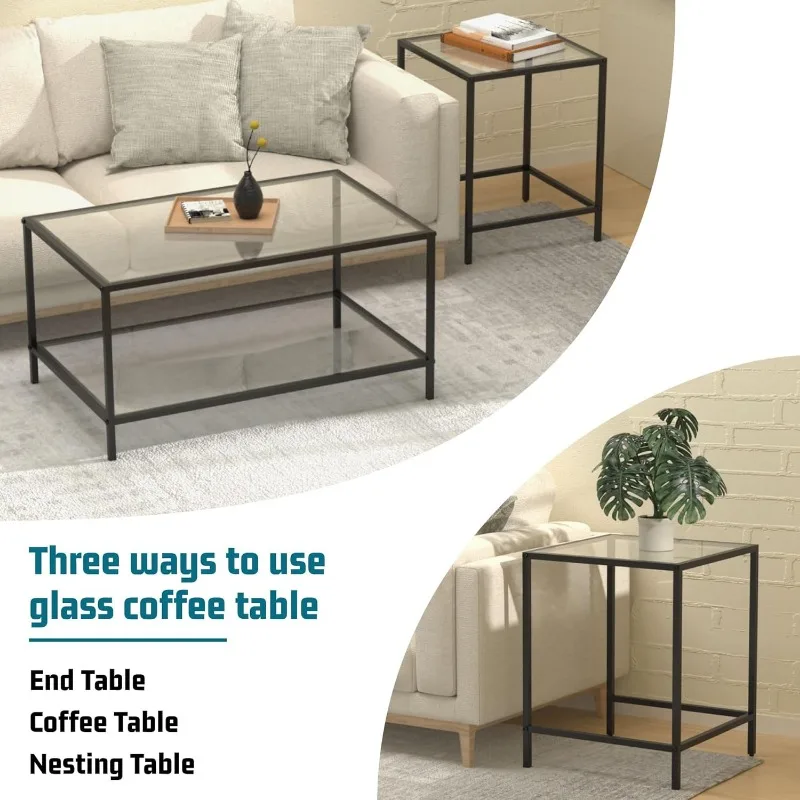
Media storage presents another opportunity to save space through wall-mounted solutions that eliminate the need for bulky entertainment centers. Floating cabinets with simple fronts maintain visual simplicity while hiding electronic components and media.
For small living room layouts, consider:
– Floating furniture slightly away from walls to create the illusion of space
– Defining areas with rugs rather than physical dividers
– Using corner spaces effectively with purpose-built corner units
– Creating conversation areas that maintain open pathways
Even the smallest living rooms can feel welcoming and functional when furnished with appropriately scaled Scandinavian-inspired pieces that prioritize both form and function.
Bedroom Essentials for Compact Spaces
Bedrooms often represent the greatest challenge in small homes, as beds themselves consume substantial floor area. Scandinavian approaches to bedroom design maximize remaining space while creating calm, restful environments.
Start with bed frames that incorporate storage:
– Platform beds with integrated drawers eliminate the need for separate dressers
– Under-bed storage systems make use of otherwise wasted space
– Wall-mounted headboards with integrated shelving reduce the need for nightstands
When traditional nightstands won’t fit, consider space-saving alternatives:
– Wall-mounted floating shelves at bed height
– Narrow ledges that provide just enough space for essentials
– Side and end tables with minimal footprints
– Pendant lights instead of table lamps to free up surface space
Wardrobe solutions require particular creativity in small bedrooms:
– Open clothing rails when closet space is limited
– Over-door hooks and organizers for frequently used items
– Bed frames with space for vacuum-sealed bags underneath
– Seasonal rotation systems to store off-season clothing elsewhere
Thoughtful lighting enhances both functionality and perceived spaciousness. Consider:
– Wall-mounted reading lamps instead of table lamps
– Ceiling fixtures that distribute light evenly
– Mirror placement that maximizes natural light reflection
For layout, position the bed to allow door clearance and maintain at least one 24-inch (60 cm) pathway around the bed. When space is extremely limited, consider placing the bed against the wall with access from just one side.
Kitchen and Dining Areas: Scandinavian Space Efficiency
Kitchens and dining areas benefit tremendously from Scandinavian design principles, particularly in apartments and small homes where these spaces often merge. The focus on functionality makes this approach particularly suitable for these hard-working areas.
For dining tables, consider these space-conscious options:
– Round tables (36-40 inches/90-100 cm diameter) that seat 4 without corners to navigate
– Drop-leaf or gate-leg tables that fold down when not in use
– Wall-mounted tables that fold flat against walls
– Counter-height extensions that double as prep space and dining areas
Seating can be similarly flexible:
– Stackable dining chairs that store when not needed
– Bench seating that tucks completely under tables
– Stools that serve multiple purposes throughout the home
– Chairs that can work in both dining and living areas

Kitchen storage benefits from Scandinavian practicality:
– Open shelving for frequently used items reduces visual weight
– Full-height cabinetry maximizes storage capacity
– Pegboards and rail systems for utensils and tools
– Pull-out pantry systems that utilize narrow spaces efficiently
The benefits of nesting coffee tables apply equally to dining spaces, where tiered or nesting table systems can expand for guests and contract for daily use. These versatile solutions exemplify the adaptable nature of Scandinavian design thinking.
Lighting plays a crucial role in these functional spaces:
– Pendant lights focused on work areas without consuming surface space
– Under-cabinet lighting that improves functionality and atmosphere
– Reflective backsplashes that amplify available light
With thoughtful planning, even compact kitchen and dining areas can accommodate full functionality while maintaining an uncluttered, open feeling characteristic of Scandinavian interiors.
Styling Your Small Space: Scandinavian Accessories and Decor
Accessorizing small spaces requires particular restraint to prevent visual clutter while still creating personality and warmth. The Scandinavian approach to decor offers perfect guidance for this balancing act.
The “less is more” philosophy is especially relevant for small-space styling. Rather than multiple small accessories, choose fewer, more meaningful pieces that make a thoughtful impact. Consider:
– One statement artwork rather than a gallery of smaller pieces
– A single sculptural vase instead of multiple smaller decorative objects
– Quality over quantity in every category
Textiles add essential warmth without consuming space. Look for:
– Throws with subtle texture in neutral tones or muted colors
– Cushions that add comfort and color without overwhelming
– Natural materials like wool, cotton, and linen that add tactile interest
– Simple patterns like stripes or subtle geometrics rather than busy designs
Plants bring life to small spaces while improving air quality. Space-conscious options include:
– Wall-mounted planters that don’t require surface space
– Hanging plants that draw the eye upward
– Corner plant stands that utilize often-wasted corner spaces
– Small specimens with visual impact like succulents or single-stem plants
Lighting accessories should serve both practical and aesthetic purposes:
– Paper lanterns that create soft illumination without visual weight
– Adjustable wall sconces that eliminate the need for floor or table lamps
– String lights for ambient evening illumination
Decorating black mid-century coffee tables and other surfaces requires particular restraint in small spaces. Group items in odd numbers, vary heights slightly, and always maintain some empty space to prevent a cluttered appearance.
Mid-Century Modern End Table Sets of 2, Mid-Century Modern Square Side & End Tables, Mid-Century Modern White Side & End Tables
$348.24 Select options This product has multiple variants. The options may be chosen on the product pageMid-Century Modern Nesting Side & End Tables, Mid-Century Modern Nesting Table Sets, Mid-Century Modern Round Side & End Tables
Price range: $239.35 through $273.06 Select options This product has multiple variants. The options may be chosen on the product pageMid-Century Modern End Table Sets of 2, Mid-Century Modern Walnut Side & End Tables
Price range: $978.89 through $1,957.38 Select options This product has multiple variants. The options may be chosen on the product pageMid-Century Modern Glass Top Coffee Tables, Mid-Century Modern Glass Top Side & End Tables
$460.58 Select options This product has multiple variants. The options may be chosen on the product pageMid-Century Modern Glass Top Coffee Tables, Mid-Century Modern Vintage Coffee Tables, Mid-Century Modern Vintage Side & End Tables
$725.36 Select options This product has multiple variants. The options may be chosen on the product pageMid-Century Modern Lift Top Coffee Tables, Mid-Century Modern Square Coffee Tables
$454.73 Select options This product has multiple variants. The options may be chosen on the product page
Real-Life Transformations: Small Space Success Stories
The principles of Scandinavian design prove their worth most convincingly through real-life applications. Consider these transformations that demonstrate how thoughtful design choices can revolutionize compact living spaces.
A 450-square-foot (42-square-meter) studio apartment in a city center faced multiple challenges: a single room needed to serve as bedroom, living room, home office, and dining area. The solution incorporated a platform bed with substantial drawer storage underneath, eliminating the need for a dresser. A compact two-seater sofa faced a wall-mounted television with floating shelves beneath rather than a traditional entertainment unit. A round dining table with two chairs for daily use plus two folding chairs stored in a closet accommodated occasional guests. The cohesive color scheme of white, light wood, and pale blue created visual continuity that made the space feel larger and more coherent.
In a small family home of 800 square feet (74 square meters), the living room needed to accommodate both adults and children without feeling crowded. The solution featured a sectional sofa with hidden storage, nesting coffee tables that could separate for activities or games, and a wall of built-in storage with closed lower cabinets for toys and open upper shelving for display. A light color palette with strategic pops of color created distinct zones without physical barriers.
Common challenges in these transformations included:
– Limited storage requiring creative solutions
– Multiple functions competing for limited square footage
– The need to accommodate guests occasionally
– Balancing adult aesthetics with family functionality
These real examples demonstrate how Scandinavian design principles offer practical solutions that enhance daily life in limited spaces, proving that square footage limitations need not restrict quality of life.
Can Scandinavian Design Work in Any Small Space?
Many people wonder whether Scandinavian design principles can work effectively in different architectural contexts and personal circumstances. The short answer is yes—with thoughtful adaptation.
Can Scandinavian design work in older buildings with traditional architectural details?
Absolutely. The clean lines of Scandinavian furniture often create a pleasing contrast with traditional architectural elements like crown molding or exposed brick. The key is balancing—let architectural details shine while keeping furniture simple.
Does Scandinavian design work in warmer climates?
While developed for northern European conditions, Scandinavian principles adapt well to warmer regions by:
– Emphasizing natural ventilation
– Choosing lighter-weight textiles while maintaining natural materials
– Focusing on the indoor-outdoor connection through plants and natural elements
How can I incorporate Scandinavian elements without replacing everything?
Start with these high-impact changes:
– Paint walls in light, neutral tones
– Remove unnecessary items to reduce visual clutter
– Add a key Scandinavian-inspired furniture piece like a streamlined sofa
– Introduce natural materials through accessories like wooden trays or linen cushions
Is Scandinavian design affordable for limited budgets?
While high-end Scandinavian design can be expensive, its principles are accessible at various price points:
– Focus on simplicity and functionality in any price range
– Invest in fewer, better quality pieces rather than many cheaper items
– Consider vintage or second-hand pieces with good lines and construction
– Choose basic pieces from affordable retailers that embody clean design principles
The adaptability of Scandinavian design makes it uniquely suited to diverse spaces and budgets, particularly when the focus remains on its core principles rather than specific pieces.
Where to Find Quality Scandinavian Furniture for Small Spaces
When shopping for space-conscious Scandinavian furniture, knowing what to look for ensures you invest in pieces that truly maximize your space.
Key features that indicate quality and authenticity in Scandinavian-inspired furniture include:
– Solid wood construction or high-quality engineered woods
– Visible joinery as a design feature
– Clean, precise lines without unnecessary ornamentation
– Natural finishes that highlight rather than disguise materials
– Thoughtful details that enhance functionality
For small spaces, specifically look for:
– Raised legs that create visual lightness
– Multi-functional capabilities
– Appropriate scale with streamlined proportions
– Lighter wood tones that reflect more light
– Modular pieces that can adapt to changing needs
Various retailers specialize in different aspects of Scandinavian design. Specialty stores and boutiques often offer authentic pieces with higher quality construction, while mainstream retailers provide more budget-friendly interpretations of Scandinavian style. Online marketplaces increasingly feature independent craftspeople creating Scandinavian-inspired pieces with attention to traditional construction methods.
When making investment decisions, prioritize pieces that:
– Serve multiple functions or critical daily needs
– Will receive the most use (seating, beds, tables)
– Feature timeless rather than trendy design elements
– Offer the greatest space-saving benefits
Remember that true Scandinavian design is about longevity—both in construction and aesthetics. Pieces that follow genuine Scandinavian principles will remain functional and beautiful for years, making them worthy investments even at higher price points.
By applying these thoughtful principles to your small space, you can create a home that feels spacious, functions smoothly, and brings daily joy—regardless of its actual square footage.

